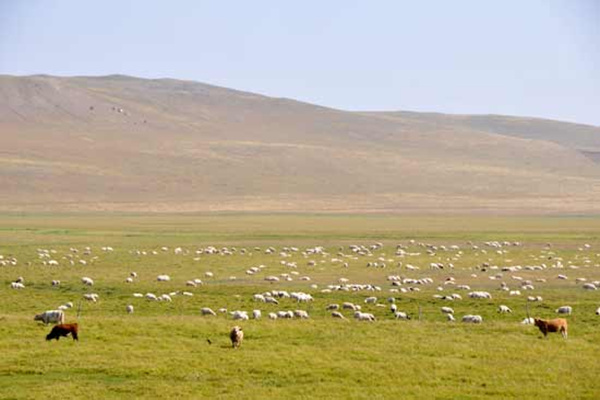China steps up grassland protection
 |
|
Scenery of West Ujimqin Banner in Xilin Gol League, Inner Mongolia autonomous region. [Photo/Xinhua] |
The improvement in grassland ecosystems has speeded up and productivity in some regions has recovered to the level of the 1980s, according to the Ministry of Agriculture of China.
Total output of fresh grass reached 102,219.98 tons last year despite severe drought in some areas, 4.04 percent higher than the average for the past decade, according to the National Grassland Monitoring Report 2014.
Monitoring 23 provinces, including autonomous regions and municipalities, the report shows that vegetation coverage of grassland nationwide is 53.6 percent, a growth of 2.6 percent on 2011.
Thanks to the "returning grazing lands to grasslands" program, areas involved show a 6 percent increase in vegetation coverage compared with non-program pastures; 53.6 percent more in height of vegetation and 30.8 percent better in output of fresh grass, the report said.
According to data, 15.2 percent of China's key grassland is overloaded with livestock, 1.6 percent lower than last year, the 10th successive year the figure has fallen.
Related: Inner Mongolian herders switch to tourism to protect grasslands
Flocks of bleating lamb greet tourists who come to stay in traditional Mongolian yurts and new homesteads run by Mongolian herdsmen in Inner Mongolia.
It is part of a new local government initiative along with other private tourism companies to help Mongolian herdsmen to open up their homes to travelers. Wu Lan Hu is a herdsman turned entrepreneur. He and his clan have already set up 27 Mongolian yurts on the edge of the Durong grassland in Damaoqi county, which is about 160 km from the provincial capital Hohhot.
"I took a government loan and built the yurts on this campsite in 2013. When I started I had only 7-8 yurts, but within a year I have expanded to 27 yurts due to the support from the local government," said Wu Lan Hu.
Travelers who stay on the campsite can ride horses, go on off-roading trips on four-wheel drives or go fishing in the shallow rivers. In the peak travel season from May to November, the steppes look as green as they must have done when Genghis Khan and his armies galloped across this land. That is also the time for the traditional Nadamu festival of the Mongolians.



 Print
Print Mail
Mail





